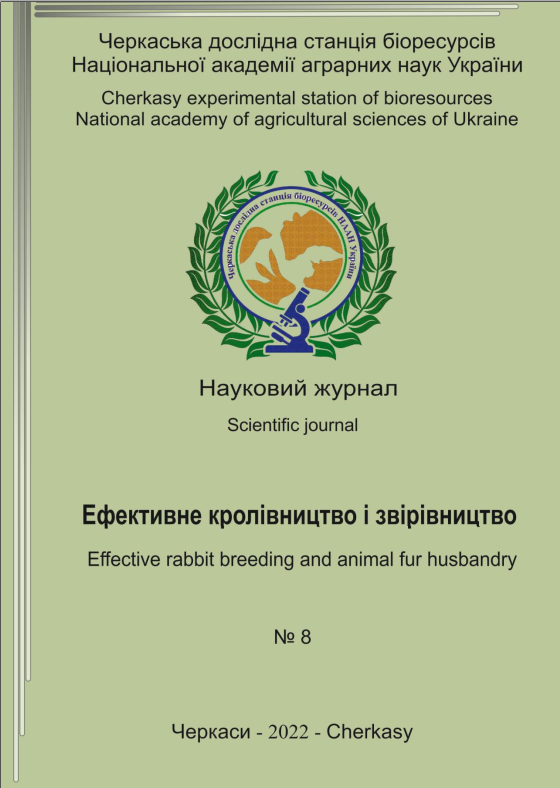INFLUENCE OF FEEDING MANAGEMENT ON THE PRODUCTIVITY OF YOUNG RABBITS UNDER INTENSIVE BREEDING
DOI:
https://doi.org/10.37617/2708-0617.2022.8.44-56Keywords:
young rabbits, diet, wheat straw flour, wheat bran, dry corn mash, economic efficiencyAbstract
The development of industrial rabbit breeding requires a comprehensive
assessment of the fodder base. In particular, it is necessary to study the productive
effect of each feed and ration as a whole on metabolism, fattening capacity,
product quality, functioning of the rabbit organism, economic efficiency.
In the zootechnical experiment, local three-breed young rabbits (NTSh) were
used. The optimal content of feed ingredients was studied: wheat straw flour, wheat
bran, dry corn mash. The research was carried out using the method of analogue
groups, in the 3rd series. In each series, 4 groups of young rabbits with 30 heads each
were formed. In the first series of studies, the standard (farm) compound feed recipe
was taken as control, in the second and third series of studies, the optimal recipe from
each previous series of studies was taken as control.
During the entire research period, it is possible to compare the indicators
of the I control group of the 1st series of experiments to the most productive group
of the 3rd series of experiments. This is an increase in average daily gains from
40.22±0.5g to 43.15±0.225g, meatiness (waist width) from 5.85±0.043 to
6.0±0.05cm, feed conversion 3.15-3, 0 kg and the cost reduction from UAH 292.45
to UAH 259.97.
Maximum fattening, meat and economic indicators were provided by the
structural content of the diet of fattening rabbits: 15% content of wheat straw
flour, 20% wheat bran and 10% dry corn mash.
The indicator of comprehensive assessment (PKO) of young rabbits, based
on the indicator of average daily growth and waist width, was the highest in young
animals of the III group (279.48) with a content of 10% of dry mash in the diet.
The ration ensured an increase in average daily gains by 7%, an increase in
the meatiness of carcasses by 2.56%, and an improvement in feed conversion by
5%. At the same time, feed costs for the production of rabbit meat decreased by
more than 11%.
Economic efficiency in the study: cost reduction of 1t of granulated fullration compound feed by more than UAH 32; increase in growth intensity by 7%;
increase in carcass meatiness by 2.56%; 5% improvement in feed conversion.


